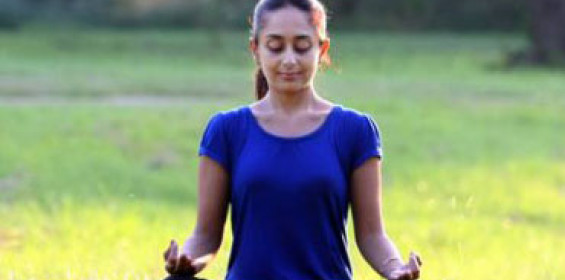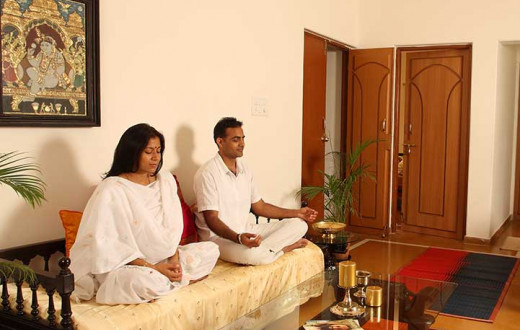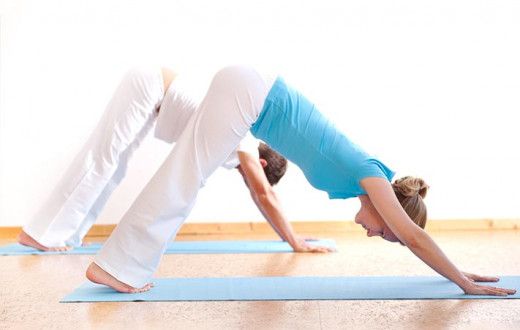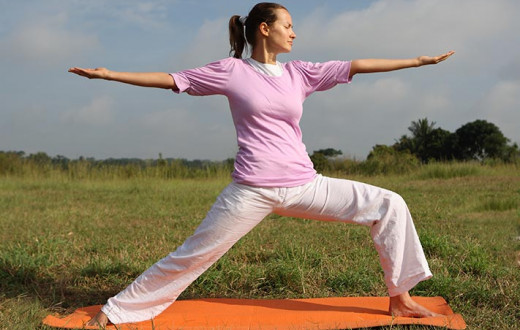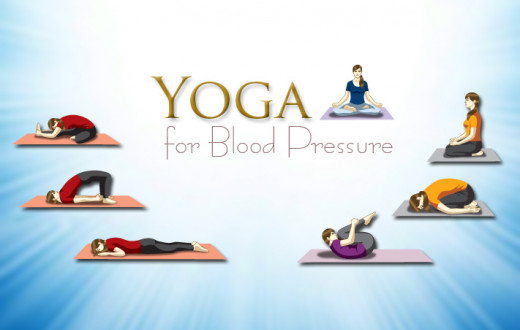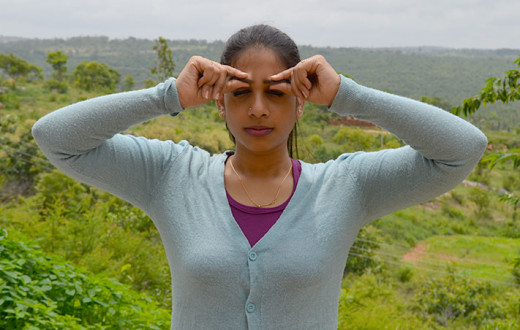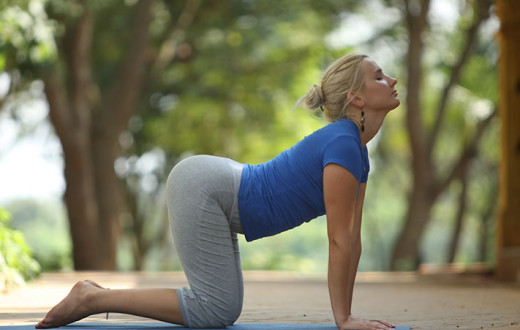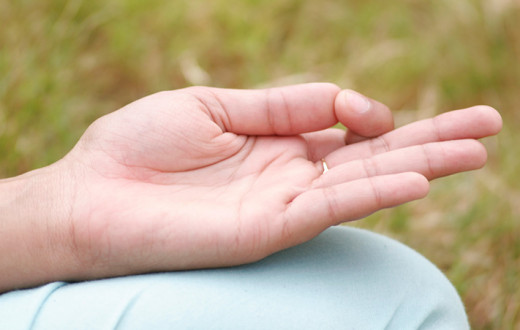Yoga Nidra or "yogic sleep" is an ancient practice which is little known to common people, but is getting a lot of attention due to its therapeutic effects on mind and body.
It was spring of 2008 and I was looking for some refreshing yoga classes, because I wanted to take good advantage of not too hot and not too cold whether into something productive. One of my friend then suggested a yoga class which she had recently attended "Sri Sri Yoga". I joined the course without any delay. The course began, we learnt some amazing yoga postures. And at the end of it all of us were sweating very hard and why not? The muscles which rarely twitched in our body were suddenly put into life by excessive workout. Our teacher smiled, and finally took pity and asked us to lie down in shavasan (Corpse Pose) and we lied down without any second thoughts. As I lay, I was sure I would fall asleep in no time. But whatever happened next was beyond my imagination and experience.
Our teacher instructed us to close our eyes and he made us take our mind to the various parts of our body. As the process began I was going deeper into myself and felt thoroughly relaxed and lighter. After the process ended I was left awestruck. I never felt this light and in terms with myself before. Our teacher told us that this was Yoga Nidra or Yogic Sleep. Just this experience of Yoga Nidra compelled me to introduce this wonder to the many who are unaware of it.
Yoga Nidra or Yogic sleep is a form of meditation or relaxation which has been found to reduce tension and anxiety. It is a state in which we are in deep sleep yet consciously aware. It is a midway between wakefulness and sleep, wherein our body is relaxing but our mind is working on a deeper level and relaxing every bit of our body and mind. In more simple terms in yoga nidra our mind witnesses the relaxation of our body, undergoing relaxation itself.
While Yoga Nidra is generally believed to be a relaxation process, it on the other hand have healing properties too.
Yoga Nidra guides us through each layer of being called the koshas which includes physical, mental, emotional and spiritual layers, which makes this practice as a healing as it relieves tension and stress at each layer.
It takes us to a point where we become equal with ourselves detaching us from the world and evolving us towards self-awakening. This state is generally referred to as "Samadhi".
Benefits of Practising Yoga Nidra:
We do not bring any benefits to our body from outside. Our body knows exactly what to do to attain a perfect equilibrium between our body and health. But to turn on that switch we have to reach to the state which only Yoga Nidra can help us attain. That state where our body's own revitalisation and regeneration takes place.
Yoga Nidra works upon the deeper level of being and has the power of transforming core negative beliefs which not only changes our outlook, but improves our health and gives us a sense of happiness and leads us to self-awakening.
According to a research conducted in various well recognised universities and medical centres, which includes Banaras Hindu University, Ohio State University, Medical College of Ohio etc regular practice of Yoga Nidra can prevent so many ailments as well as cure them. This includes cardiovascular, psychosomatic condition, Insomnia, high blood pressure, multiple sclerosis. It also increases helper cells that defend against infectious disease. It also activates our dormant healing energy to improve overall health and well being.
Steps to Practice Yoga Nidra:
The essence of Yoga Nidra can only be experienced when our body demands relaxation. Practising it is only worthy when our body has worked out and needs rest. Yoga Nidra becomes more beneficial when practiced after doing some muscle jerking yoga. Practising yoga nidra after yoga is more beneficial because both our body and mind is calm and at peace, relieved of all stress and tension.
Getting started:
1. Lie down straight on your back in Corpse Pose
(Shavasana). Close your eyes and relax. Take a few deep breaths in and out. Remember to take slow and relaxed breaths, and not ujjayi breaths.
Tip: If you feel any discomfort or pain in lower back, adjust your posture or use a pillow to elevate the legs a little, for more comfort.
2. Start by gently taking your attention to your right foot. Keep your attention there for a few seconds, while relaxing your foot. Then gently move your attention up to the right knee, right thigh and hip (again for a couple of seconds). Become aware of your whole right leg. Repeat this process for the left leg.
3. Similarly, take your attention to all parts of the body: genital area, stomach, navel region, chest, right shoulder and right arm, followed by the left shoulder and left arm, throat, face and the top of the head.
4. Take a deep breath in, observe the sensations in your body, and relax in this still state for a few minutes.
5. Now, slowly becoming aware of your body and surroundings, turn to your right side and keep lying down for a few more minutes.
6. Taking your own time, you may then slowly sit up, and whenever you feel comfortable, slowly and gradually open your eyes.
Yoga nidra is thus a joyous, effortless way to end your yoga practice. Just let go, relax and enjoy the experience that follows.









